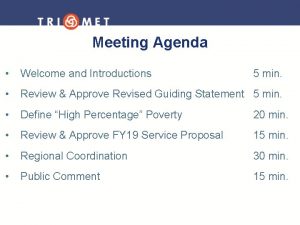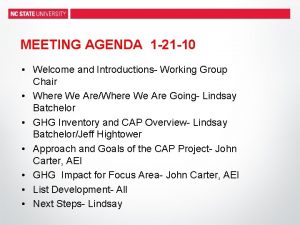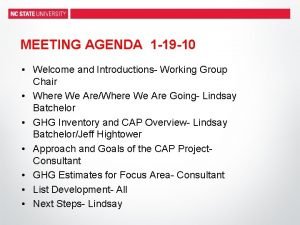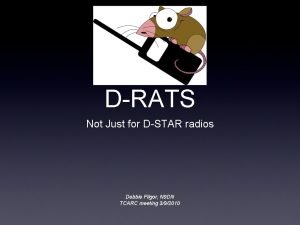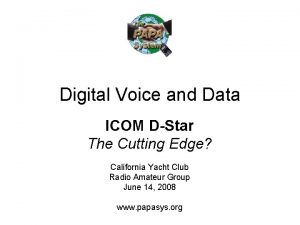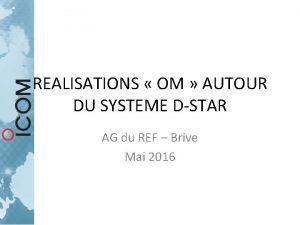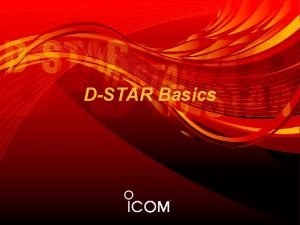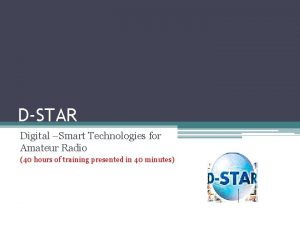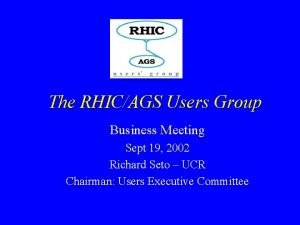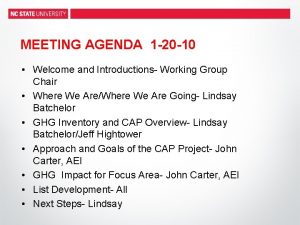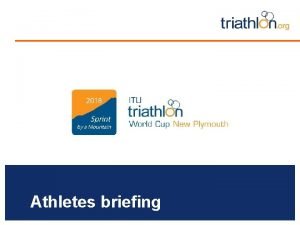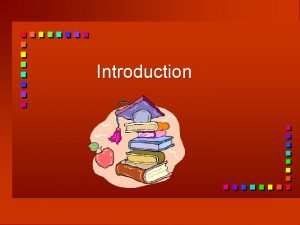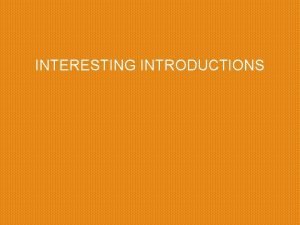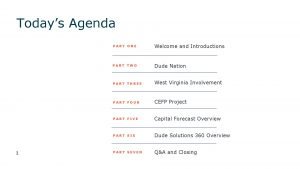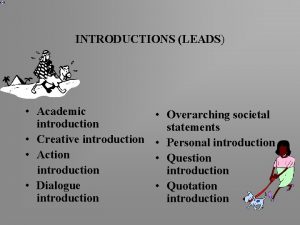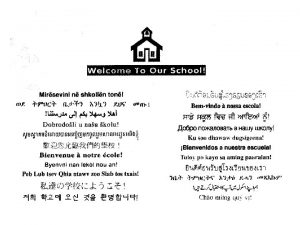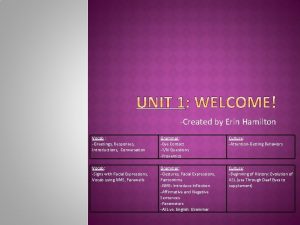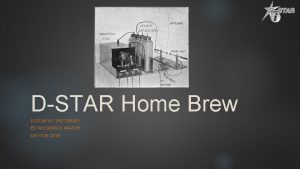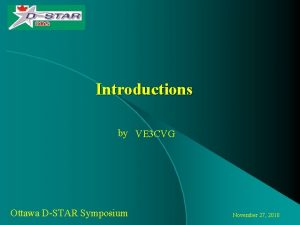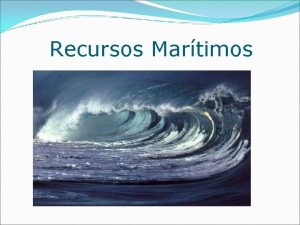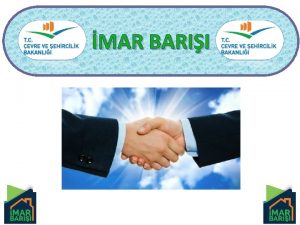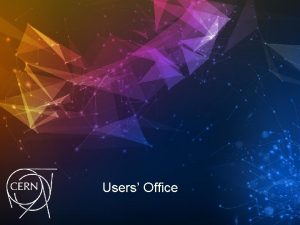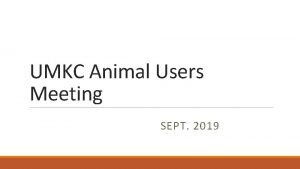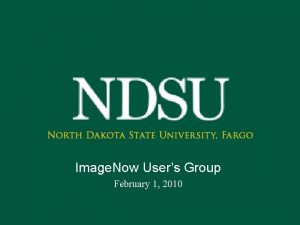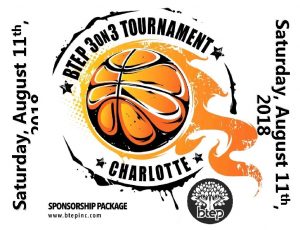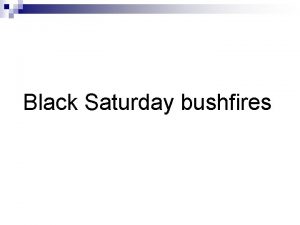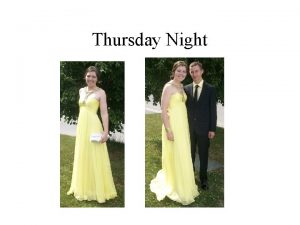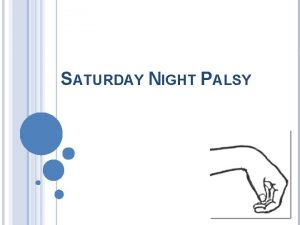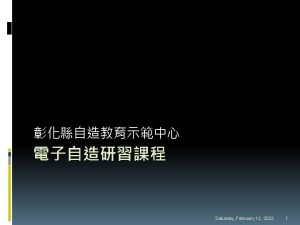DStar Users Meeting Saturday Mar 6 2010 Introductions































- Slides: 31

D-Star User’s Meeting Saturday, Mar 6 2010

Introductions �Let’s get to know one another

Purpose �Introduce new users to D-Star �Refresh current users in procedures and practices �Help with radio programming including programming examples �Explain D-Controller functions and command structure �Explain Linking, Routing, Reflectors

What IS D-Star? �Digital Smart Technologies for Amateur Radio �Developed jointly by the Japan Amateur Radio League and ICOM beginning in 1999 �Significant changes released in 2004 �Defines two modes �DD (Digital Data) – High-speed digital data – only on 1. 2 GHz – not in very wide use �DV (Digital Voice) – Voice (and a low-speed data channel) available on 2 m, 70 cm, and 23 cm �We’ll be discussing the DV mode

Digital Voice �Uses the AMBE CODEC, provided by Digital Voice Systems, Inc. �Operates at 4800 bps � 2400 bps for the voice channel � 1200 bps for the Forward Error Correction channel � 1200 bps for the low-speed data channel �Approximately 6. 25 k. Hz occupied bandwidth – a significant spectrum savings compared to 16 k. Hz occupied by a standard FM voice signal

Advantages and Disadvantages �Range is approximately the same as a standard FM repeater, but with a difference �Standard FM Repeater signals gradually degrade and get noisier with distance �D-Star signals decode and sound fine until they “drop off a cliff” �Marginal D-Star signals will “R 2 D 2” �D-Star radios cost somewhat more than comparable FM radios �While an open standard, only ICOM is making D-Star equipment

More Advantages and Disadvantages �CODEC is proprietary – this gives some people heartburn �Programming becomes more difficult �You can link to any connected D-Star repeater in the world with simple commands �Linking is currently Internet based, reducing reliability in the event of a disaster �There are many more advantages and disadvantages, but we’ll leave that for future discussions

Current NC D-Star Repeaters �W 4 GSO – Greensboro, NC – 70 cm �AK 4 EG – Burlington, NC – 2 m, 70 cm, 23 cm �KR 4 RDU – Carrboro, NC – 70 cm �KI 4 WXS – Charlotte, NC – 2 m, 70 cm, 23 cm �KR 4 RAL – Raleigh, NC – 70 cm

On To The Good Stuff �OR �How to USE that new D-Star radio!

Some Definitions to Start Off �Repeater �D-Controller �Gateway �D-Plus �Reflector �Linking �Routing �DV-Dongle �DV-Access Point �Quick-Key

Callsign Fields �My. Call �Ur. Call �Repeater 1 �Repeater 2

How to Make It All Work �Think of it like layers �Normal FM repeater – Frequency, Offset, maybe Tone �D-Star repeater – Frequency, Offset, ID (My. Call), Destination (Ur. Call), Repeater used (R 1), Additional Repeater used (R 2) �All fields must be properly set to make it work like you want it to

Some Examples �For regular day-to-day communications �My. Call – K 4 HC �Ur. Call – CQCQCQ �R 1 – W 4 GSO**B �R 2 – W 4 GSO**G �This enables anything I transmit to pass to the Gateway – this includes connected Dongles, Access Points, Repeaters and Reflectors

�For local ONLY communications (e. g. don’t want to interrupt conversations on a connected reflector) �My. Call – K 4 HC �Ur. Call – CQCQCQ �R 1 – W 4 GSO**B �R 2 – Blank or “Not Use” �My transmissions WILL NOT be passed to the Gateway – will ONLY be heard on the local repeater

Linking vs Routing �Routing defined in the D-Star standard �Linking defined by D-Plus �Routing is more cumbersome �Every station wishing to participate must alter their settings to participate in Routing �Linking requires a single command, then everyone set up for Gateway operation can participate �Routing is blind – you can’t hear what’s going on at the distant end �For these reasons, Linking is normally preferred over Routing

Routing – A BRIEF Overview �Two types of Routing �Callsign Routing (to a specific station) �Source Routing (to a specific Repeater) �One advantage of Callsign Routing is you don’t need to know WHERE the called station is – the call is routed to the last repeater where that station was heard (some delay in this)

Callsign Routing �My. Call – K 4 HC �Ur. Call – WG 5 Q �R 1 – W 4 GSO**B �R 2 – W 4 GSO**G �Routed to last heard repeater/port WG 5 Q used �To reply, WG 5 Q would need to alter his settings (using one-touch reply)

Source Routing �My. Call – K 4 HC �Ur. Call – /KR 4 RDUB �R 1 – W 4 GSO**B �R 2 – W 4 GSO**G �Transmissions would output on the KR 4 RDU Port B repeater �To reply, a station would need to alter settings �Note the port is in the 8 th position

Linking – THE Preferred Way �My. Call - Stays the same, all the time �Ur. Call – Normally CQCQCQ �Also used to Link, Unlink, Callsign Route, Source Route, issue D-Plus and D-Controller commands �R 1 – Always the repeater and port you are talking into – 8 digits �R 2 – Used for Gateway and (future) RF port forwarding – 8 digits

Link Examples �My. Call – K 4 HC �Ur. Call – REF 017 CL �R 1 – W 4 GSO**B �R 2 – W 4 GSO**G �This will link the repeater to Reflector 17 C �Note L in the 8 th position �This is the only time the port is moved from the 8 th position to the 7 th position

Link Examples �My. Call – K 4 HC �Ur. Call – KR 4 RDUBL �R 1 – W 4 GSO**B �R 2 – W 4 GSO**G �This will link W 4 GSO B to KR 4 RDU B �Note no space between KR 4 RDU and B �Note L for Link in position 8

Link Examples �My. Call – K 4 HC �Ur. Call - *******U �R 1 – W 4 GSO**B �R 2 – W 4 GSO**G �U in the 8 th position �This will Unlink from any repeater or reflector

Command Examples �My. Call – K 4 HC �Ur. Call – W 4 GSO**E �R 1 – W 4 GSO**B �R 2 – Not Use �Echos from D-Controller �Also shows BER (Bit Error Rate)

Command Examples �My. Call – K 4 HC �Ur. Call – W 4 GSO**E �R 1 – W 4 GSO**B �R 2 – W 4 GSO**G �Echos from D-Plus �Also shows BER

Command Examples �My. Call – K 4 HC �Ur. Call – W 4 GSO*S 0 �R 1 – W 4 GSO**B �R 2 – Not Use �SAVES a message for automatic playback

Command Examples �My. Call – K 4 HC �Ur. Call – W 4 GSO*R 0 �R 1 – W 4 GSO**B �R 2 – Not Use �RECALLS (Plays) a recorded message

Command Examples �My. Call – K 4 HC �Ur. Call – W 4 GSO*C 0 �R 1 – W 4 GSO**B �R 2 – Not Use �CLEARS a recorded message

Notes on Channel Memories �W 4 GSO Gateway �While you can manually change the values especially �W 4 GSO Local in Ur. Call for Linking, �W 4 GSO Link to Ref 17 C Routing and issuing commands, this tends to be �W 4 GSO Link to Ref 02 A �W 4 GSO Unlink cumbersome �W 4 GSO Save Message �I have several “channels” programmed with the same �W 4 GSO Play Message frequency information, but �W 4 GSO Clear Message to perform different �Plus others functions �Memory Names identify what is what

More Programming Ideas �Use Memory Banks for different areas �Develop a naming convention that YOU understand �Buy the Software, and make or buy the cables – your life will be much easier

Questions?

Thank You!
 Meeting agenda welcome and introductions
Meeting agenda welcome and introductions Meeting agenda welcome and introductions
Meeting agenda welcome and introductions Agenda welcome and introductions
Agenda welcome and introductions Meeting agenda welcome and introductions
Meeting agenda welcome and introductions D-star radios
D-star radios Icom dstar
Icom dstar Dstar france
Dstar france What is dstar
What is dstar D-star gateway system
D-star gateway system Dstar satellite
Dstar satellite Rhic ags users meeting 2020
Rhic ags users meeting 2020 What is meeting and types of meeting
What is meeting and types of meeting What is meeting and types of meeting
What is meeting and types of meeting For today's meeting
For today's meeting Proposal kickoff meeting agenda
Proposal kickoff meeting agenda Agenda welcome and introductions
Agenda welcome and introductions Agenda welcome and introductions
Agenda welcome and introductions German family vocabulary
German family vocabulary Agenda welcome and introductions
Agenda welcome and introductions British council ancient egypt
British council ancient egypt Introductions by marsha
Introductions by marsha Business english conversation
Business english conversation Counter claim sentence starters
Counter claim sentence starters Interesting introductions
Interesting introductions Agenda welcome and introductions
Agenda welcome and introductions Examples of survey introductions
Examples of survey introductions Project introductions
Project introductions Creative introductions
Creative introductions Business english greetings
Business english greetings Agenda welcome and introductions
Agenda welcome and introductions Greetings and introductions
Greetings and introductions Asl greetings and introductions
Asl greetings and introductions

